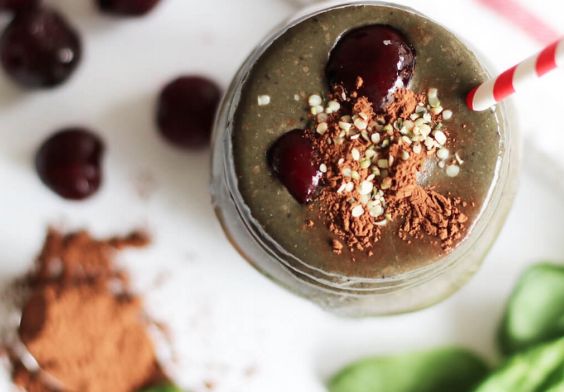
We’re onto week 9 of our Healthy Hormones Series! Here is a quick summary of what we’ve covered already (and if you want to catch up, go ahead and follow the links):
A for Adrenal (Fatigue)
B for Basal Body Temperature Tracking
C for Controlling Cortisol
D for Diabetes
E for Estrogen Dominance
F for Fibre, Fluids, Ferments, & Fitness
G for Goitrogens
H for Hypothalamic Pituitary Adrenal (HPA) axis
And on Facebook, we’ve not only been building on this info and rounding out these topics a little more, but we’ve also touched on B for Bloating (yes – it relates to hormones), D for Digestion (yes – it relates to hormones!), E for Empaths (yes – it also relates to hormones!) and much more material that we (ugh!) simply didn’t have the time for on this blog. So don’t miss out – mosey onto the Bite out of Life Wellness Facebook page and join our interactive community.
By now, we’ve covered about a third of the alphabet and while I have mentioned what a hormone is — I’ve realized that I haven’t actually defined them and given you a succinct picture of how they work. Whoops. Well, better late than never!
Hormones are chemical messengers that travel all over your body via bloodstream and they help regulate the activity of your organs and the work those organs do. You know I like metaphors (and I worked for maaaaaaaaany years in a corporate workplace) so, envision your body as a workplace. Each person or organ has X tasks or roles to fulfill. To improve communication between team members or organs, your company hires some messengers – some hormones. Depending on different scenarios and stimulus, these messengers pass post-it notes from one team member to another all day long to ensure that this company (your body!) runs like a well-oiled machine.
Example:
- Stimulus: Trish feels stressed.
- Memo (probably from the H and P of the HPA axis): “Adrenals, please secrete more cortisol hormone to help Trish deal with stress.”
- Bodily function that follows: Blood sugar increases so Trish has enough energy to deal with the stressor. (Please note, this is just one example – cortisol will trigger other adaptive responses for the situation as well.)
- Stimulus: Trish conquers stressful situation.
- Memo: “Ok adrenals, we can hold off the cortisol for now, Trish is relaxed.”
As we discussed in the HPA post , all runs well…until the system is overloaded, overburdened, overstressed or otherwise goes kaflooey. What was meant to be a short-term stint starts lingering as a chronic problem. Soon the post-it notes are flying and no one can keep up as to what is needed or wanted or required in that workplace anymore. Chaos. And hormone unhappiness ensues.
It happens. And it happens to the best of us. So when hormonal balance is off-kilter, you might experience a change in energy levels, some icky skin stuff, abnormal weight gain/weight loss, more frequent infections, digestive distress like bloating and pain, etc – subtle (and not-so-subtle) signs that all is not well.
These are markers of inflammation and they manifest in response to hormonal imbalance(s) – so it really is your body’s way of trying to tell you, “Hey! Listen up! Something’s wonky with your hormones. You should do something about it before it evolves into something more serious.”
So, how can you identify inflammation at its earliest manifestations? At what point is the inflammation considered ‘chronic’? And before we get ahead of ourselves (ahem – again) – what is inflammation?
We’ll cover all this (and more) in today’s I is for Inflammation post.
What is Inflammation?
According to LiveScience, “inflammation is a vital part of the immune system’s response to injury and infection. It is the body’s way of signalling the immune system to heal and repair damaged tissue, as well as defend itself against foreign invaders, such as viruses and bacteria.”
Sounds like a pretty beneficial and necessary physiological process, right? So, is there actually a downside to inflammation? (because that’s what popular media keeps telling us)
Yes! The downside is when inflammation becomes widespread (and unrelenting!) in the body. However, there’s a pretty big difference between acute inflammation, as described above, and the more detrimental, disease-promoting type of chronic inflammation.
This is not unlike the cortisol reaction we just discussed – if you were able to read between the lines (tricky, I know), cortisol is released in response to stress – which means that it technically has anti-inflammatory actions on the body – it calms the fires. It’s only when your body is stressed all the time, cortisol is always up, then the cortisol can’t keep up – that’s when you get inflammatory reactions.
But, since we covered cortisol earlier (and the steps you can take to calm that sh#t down!), let’s find out more about both types of inflammation and what we can do about keeping the nastier one at bay.
How can I tell if I have acute inflammation happening in my body?
When physical injury damages your cells, the immune system swings into action releasing antibodies and proteins, as well as increases blood flow to the area.
Common signs & symptoms that an acute inflammatory response is at work:
- Immediate response, lasting days or weeks
- Redness
- Heat or warmth
- Swelling
- Pain and discomfort
- Immobility in the affected area
Chronic Inflammation
Persistent and chronic inflammation on the other hand is when this response lingers, leaving your body in a near-constant state of “attack”, with widespread systemic effects – sometimes for years.
Common signs & symptoms that chronic inflammation may be happening in the body:
- Fatigue
- Fever
- Rashes or other skin afflictions – like eczema or psoriasis
- Abdominal or chest pain
- Excessive mucous production – like you always have to clear your throat
- Digestive issues – pain, cramps, bloating, loose stools, constipation
- Aching joints, sometimes with swelling
Many autoimmune conditions – conditions where your body essentially is set off and attacks itself via an over the top immunological reaction – are also considered to have chronic inflammatory components. These may include multiple sclerosis (MS), rheumatoid arthritis (RA), psoriasis & psoriatic arthritis, inflammatory bowel disease (IBD), like Crohn’s disease and ulcerative colitis, lupus, Type 1 diabetes, Hashimoto’s, and several others.
What can I do about chronic inflammation?
There are a number of lifestyle tips for someone experiencing this persistent type of inflammation, or who wants to prevent it from (re)occurring. Chief among them are:
- Reduce stress, and get adequate sleep (is this sounding familiar?)
- Exercise regularly and move your body daily (but not without adequate rest and recovery – remember what we discussed in H is for HPA axis?)
- Reduce alcohol consumption
- Stop smoking (do I even have to say this? Ok – ‘nuff said. Please get help and do it. No good can come of this!)
- Re-evaluate your diet, which may include taking supplements known to reduce inflammation
What’s in an anti-inflammatory diet?
If you want to reduce inflammation for overall good health — your diet plays a huge role. The focus should be on whole foods that contain a wide variety of nutrients.
When choosing, think about which foods give you the best bang for your nutrient buck! Basically, you want to eat more anti-inflammatory foods and fewer inflammation-promoting foods — which means avoiding processed “food-like products” whenever possible.
Specific foods that are known to fight inflammation:
- Fruit like tomatoes, citrus, apples, berries, and cherries – especially tart Montmorency cherries (see my recipe below…..mmmmmmm…cherries….yum!)
- Leafy greens & cruciferous vegetables like broccoli, kale and Brussels sprouts
- Fatty fish & other healthy fats like nuts, seeds, avocados, olives & olive oil
- Aromatic spices like turmeric, cinnamon, fenugreek
- Green tea
- Dark chocolate and raw cacao powder (It’s true!)
- I’ve covered some of my Favourite Foods to Fight inFlammation here, so go ahead and check it out here. And no, I couldn’t resist those alliterative F’s!
Not surprisingly, you will want to greatly reduce or eliminate the following:
- Refined carbohydrates & ultra-processed/packaged foods
- High amounts of sugar & high fructose corn syrup (HFCS)
- Fried food & “franken fats” like margarine
- Pop and other highly sweetened drinks, including most fruit juices
- Processed deli meats (and yes, reducing the amount of red meat you eat is a good idea too)
- Alcoholic beverages (although a few studies show that red wine in moderation has been shown to have some benefits for warding off inflammation. But we are talking moderation: 5 oz per day for women and 10 oz per day for men is what was studied)
- Supplements like fish oil, devil’s claw, turmeric, ginger, resveratrol, quercetin and willow bark (known as “nature’s aspirin”) may also assist in bringing down systemic inflammation. To understand how these work and to get advice on the appropriate dosage, consult with a qualified health practitioner (Dr. Google is likely not the best source/resource).
Summing it all up…
So, to answer the question: “Should I be concerned with inflammation?”
If you’re striving to keep yourself healthy for the long run, and you want to know what single thing you should be paying (more) attention to in your health optimization routine — it’s INFLAMMATION.
There’s no question that persistent, chronic inflammation is unhealthy and can lead to disease, and has been shown to be an underlying common denominator in many serious health conditions. It will wreak havoc on your hormonal balance and without doubt have an impact on overall health.
The reality is that your diet and lifestyle is either helping to keep inflammation at bay or it’s driving it. This is why you should aim to include as many anti-inflammatory foods in your daily diet as possible — to lower your risk of disease, and for optimal health and wellbeing.
How about kicking off your new anti-inflammation nutrition plan with a delicious sweet treat?
RECIPE: Inflammation-Cooling Dark Chocolate-Cherry Smoothie
Serves 1
Ingredients
- 1 cup Frozen Cherries (tart cherries if you can find them)
- 1 – 1.5 cup Almond, Cashew or Coconut Milk (homemade if you prefer!)
- Handful Baby Spinach Leaves (organic preferable)
- 1 Tbsp Raw Cacao Powder (not “dutch processed” cocoa powder)
- 1 Tbsp Almond Butter
- ½ tsp Cinnamon
- 1-2 Medjool Dates, pitted & pre-soaked in a bit of water to soften
Optional add-ins & toppers (for extra nutrients & texture)
- Cacao Nibs or Cacao Powder
- Shaved Dark Chocolate
- Shredded Coconut (unsweetened)
- Hemp Hearts
- 1 scoop Vegan Protein Powder (to make it a balanced meal; use low-sugar/unsweetened, plain, vanilla or chocolate flavour)
- Cherries, pitted
Directions
-
Place all ingredients, liquid first, into a high-quality blender and blend on high (or smoothie setting) until desired consistency is reached.
-
Add a bit more dairy-free milk or water to thin out if desired.
-
Top with one or more of the extras and either sip it or spoon it 🙂
REFERENCES
LiveScience: What is inflammation?
Harvard Health: Foods That Fight Inflammation
Healthline: Anti-inflammatory Diet 101 – How to Reduce Inflammation Naturally
Cleveland Clinic: Why You Should Pay Attention to Chronic Inflammation
CanPrev: Deep Dive Into Chronic Inflammation
